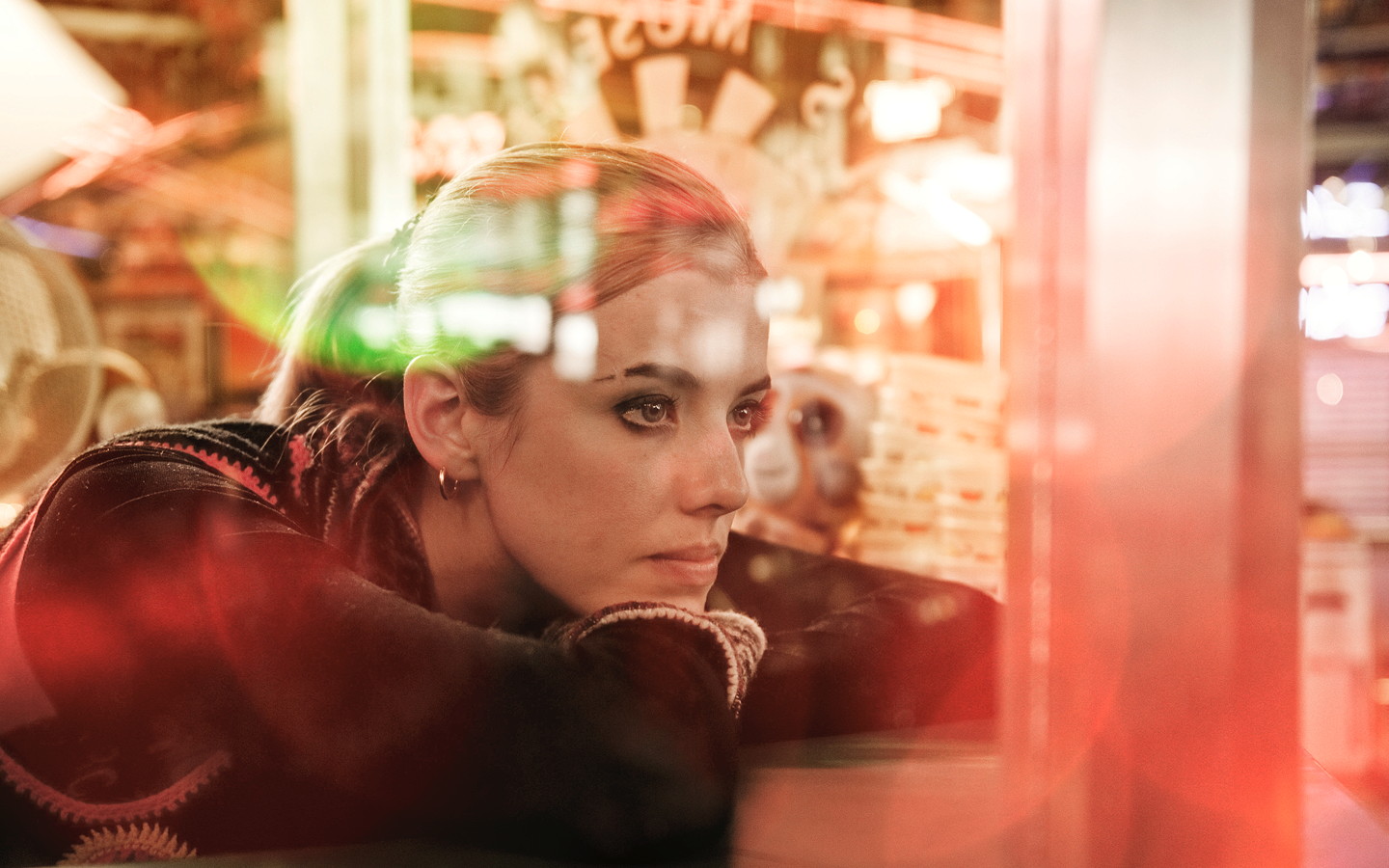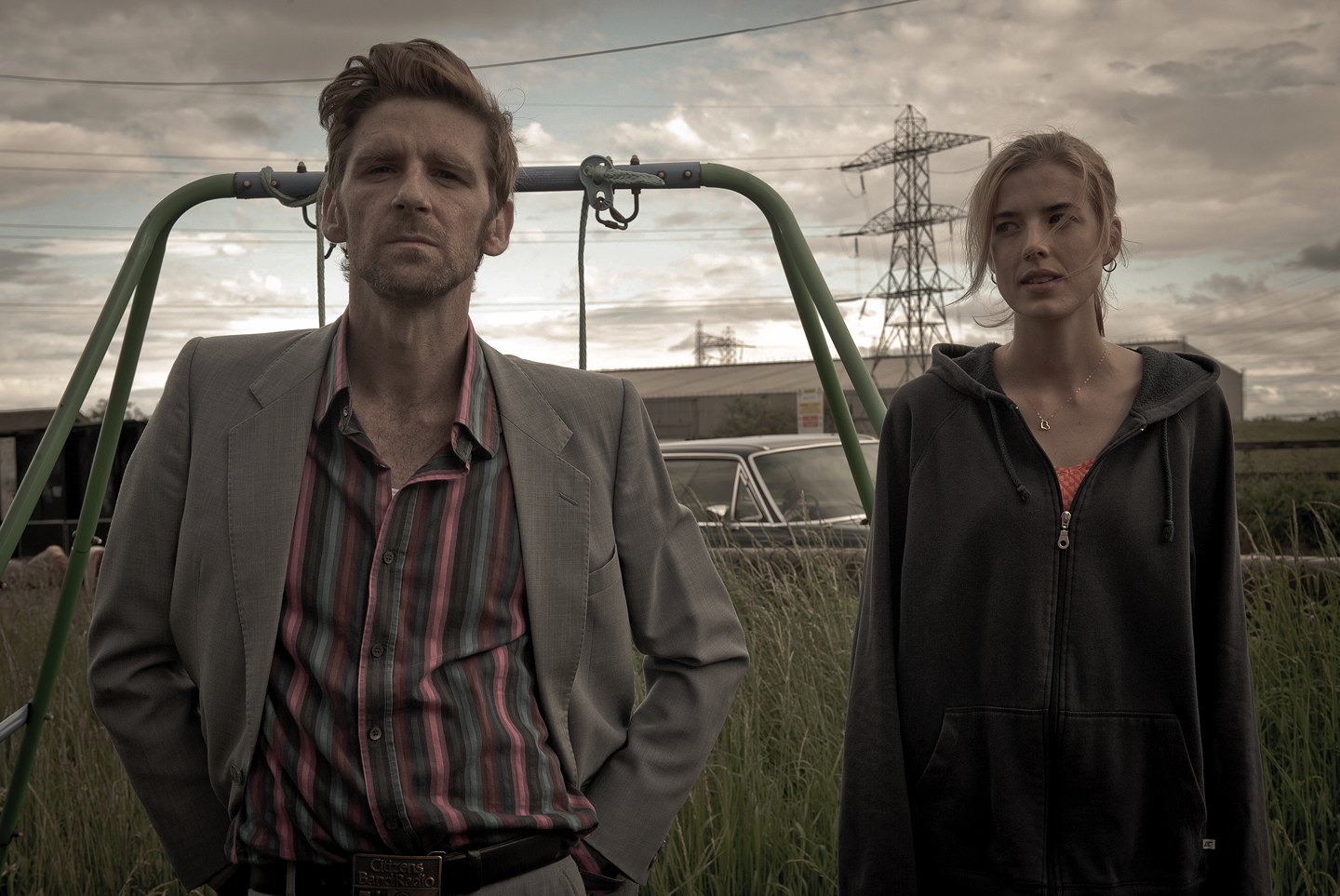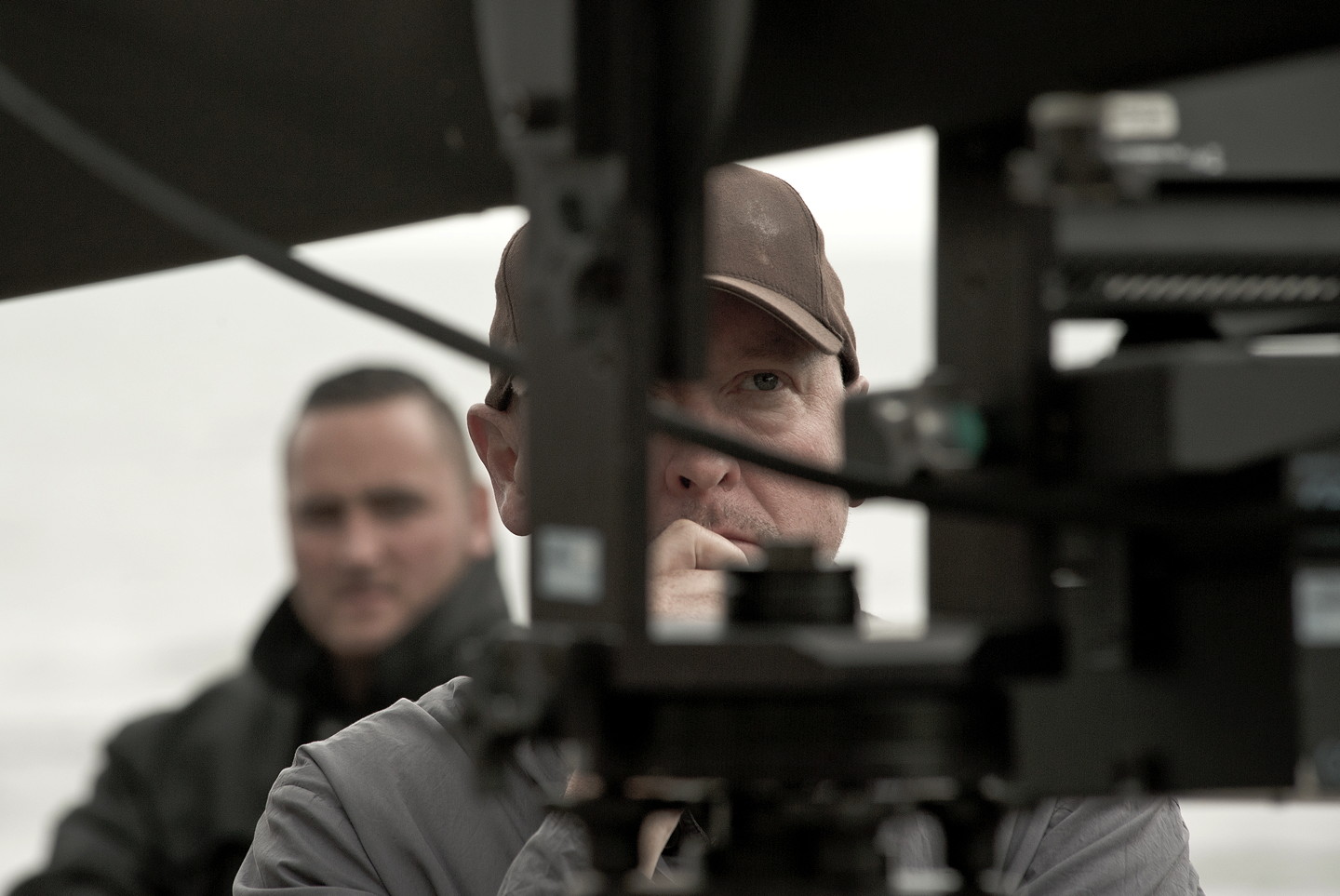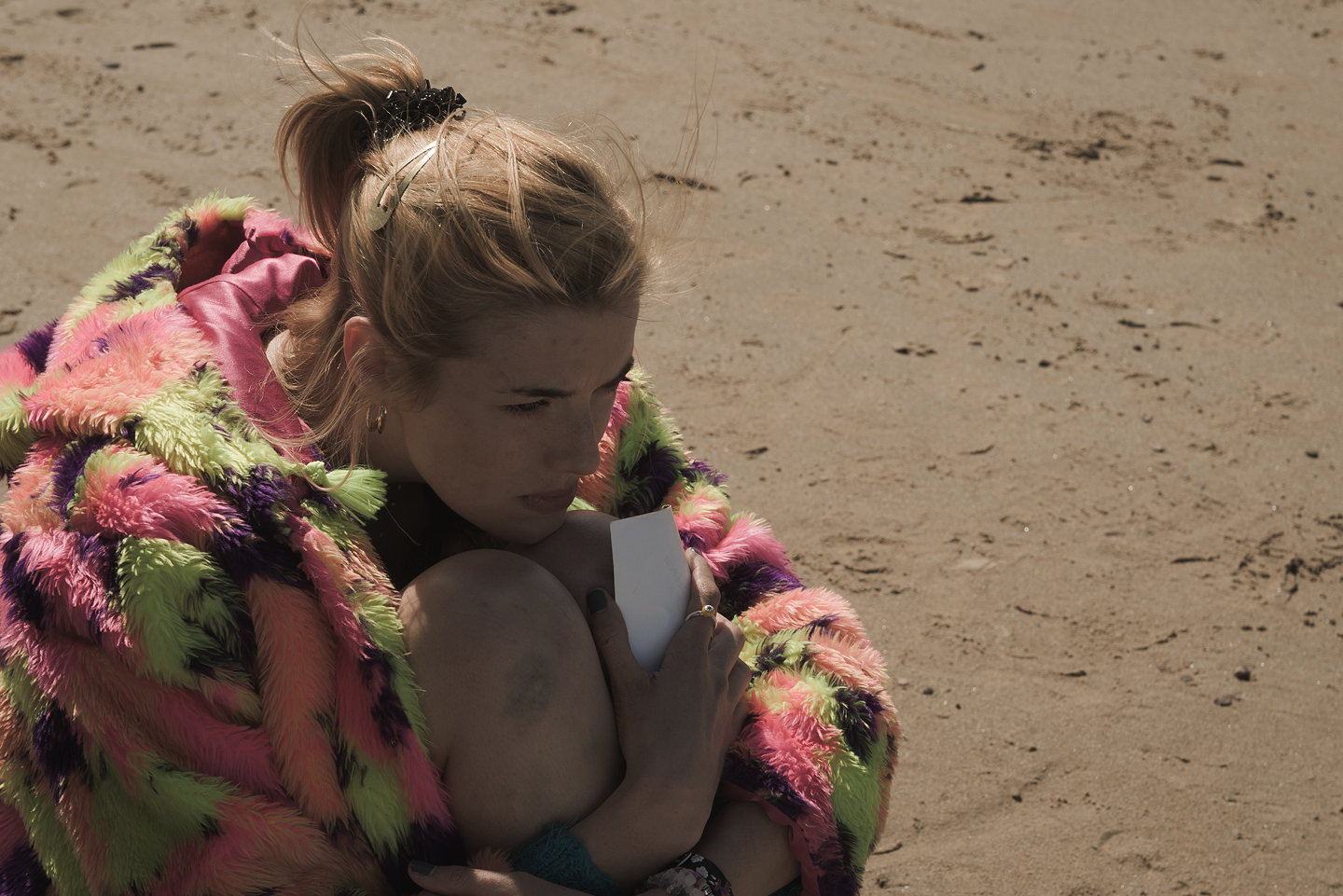
Epileptic characters are rarely seen on cinema screens and when they do appear, it’s largely as individuals solely defined by their condition, reducing them down to a ‘type’ lacking in complexity or depth. In his adaption of Ray Robinson’s novel Electricity, director Bryn Higgins redresses the balance with the tale of Lily O’Connor, a brash, sexy, witty young woman who embarks on a search for her long-lost brother. DN caught up with Higgins ahead of Electricity’s UK cinema release to find out how he used custom camera rigs and in camera effects to create a compelling look into the dual ‘jump cut’ worlds Lily inhabits as an epileptic.
We’re arguably currently living through another golden age of television. As a director of both film and TV what would you say the cinematic palette allows you to do that TV still can’t?
I’m wary of generalisations – an interesting project is an interesting project whether it’s television or cinema. Stories that often work best in cinema involve a rich, highly visual journey so it’s definitely true that Electricity is best experienced on the big screen. When we approached the writing and shooting of the film we always had that in mind. The film is meant to be a subjective and immersive experience. The best place to achieve that effect on an audience is in a cinema with a large screen and Dolby Surround sound.
The film is meant to be a subjective and immersive experience.
Creatively there are differences between working in film and in television but really it depends on the project. I did a film for the Black Mirror strand that was packed with ideas and had a cinematic approach because everyone involved was either influenced by film or worked in both TV and film. Often TV has a stronger emphasis on dialogue and less on visual storytelling. There’s no doubt that the priority in a film is on telling the story through the pictures as much as possible. That is a wonderful challenge to have.
So far I have done two films intended for cinema. Both have been on a modest budget. One of the things I’ve most enjoyed was that the brief was always to be as bold, risk-taking, visual and distinctive as possible. Every film must have its own signature in order to stand out. I think that is what film executives and of course cinema goers are looking for. Often on TV you’re shooting as part of the series so there is a look and tone that needs to be consistent between all the episodes. But I would say that more and more show runners know they need to be as visually bold as possible and many of their references are coming from films.
What was it about Ray Robinson’s original novel that attracted you to bringing the story of Lily O’Connor to screen in Electricity? How did you and script writer Joe Fisher entwine that novel with elements from Alice in Wonderland?
When I first read Ray Robinson’s novel there were two things that stood out and made me think that this could make a really distinctive film. The first was Lily O’Connor and her very brash, personable, sharply witty and yet vulnerable voice. In the novel Lily speaks to us in the first person and it’s like walking hand-in-hand with her through her amazing, edge-of-chaos life. It was really important to us to try and preserve that distinctive, bold voice all the way through the process of turning the novel into a film. It affected the way we constructed the script, the way we cast the film and the way we shot and of course edited it. We used some of Lily’s dialogue from the novel in the film as voice over and Ray Robinson was involved in polishing that in the film. I just love some of Lily’s turns of phrase. Things like “thrash, get up, get on with it, that’s what I say” are defining statements.
The second aspect of the novel that really struck me was how incredibly visual it was. Ray’s writing is very graphic and when it came to the hallucinatory sequences he did a brilliant job of conveying what Lily was seeing on the page. It made me realise that this was an opportunity to make a film on two levels. Firstly in the real world with Lily’s very personal and moving search story, and secondly in the strange hallucinatory world brought on by her epilepsy. I think it’s quite rare to get the chance to make a film that takes place in two worlds, as it were.
The connection to Alice in Wonderland is in the novel and it’s something that Joe Fisher the screenwriter and I tried to transfer across into the script. It’s a wonderful underlying visual metaphor to be able to return to. We always felt that Lily’s journey was like Alice’s in that she starts in a quiet seaside town and then has to come down to London, which to Lily is a chaotic monstrous place. This mirrored Alice falling down the rabbit hole and her journey through Wonderland. It’s stretching it a bit but the character of Lily’s brother Mikey is kind of like the White Rabbit, always slightly out of reach.

How important was it that Lily be an active protagonist, not simply a victim of her condition who has events happen to her?
One of the most attractive aspects of the novel was the great strength of Lily. I absolutely loved the opportunity to make a film with a strong defiant female lead who overcame all kinds of obstacles both outside and inside herself, and comes out stronger and triumphant at the end. We all know that there aren’t enough films with strong female leads, and not enough films being made by female film makers. On Electricity, we had the producer Clare Duggan, a very strong and inspiring presence. I know that this theme is something that really attracted Agyness to the project as well.
Unsurprisingly, people with epilepsy feel very strongly that they should not be defined by their condition. There are many misapprehensions and taboos that unfortunately surround epilepsy. One of the really fulfilling things about making Electricity is that we may, in our small way, help to break down some of those taboos or misconceptions. So the image of Lily as a very strong but also sensitive and human person is extremely important.
Did the advice you received from the Epilepsy Society affect the way we see Lily behave in the scenes when she’s not having an attack, as well as the filming style of the actual seizures themselves?
A significant amount of the funding for the film came from the Wellcome Trust, the medical charity. We wanted to ensure that the way we portrayed epilepsy and its effect on Lily was as accurate as possible. So we worked with the Epilepsy Society throughout the whole process of scripting shooting and editing. We also had a medical advisor, a really wonderful and enlightened consultant called Dr Gonzalo Alarcon. Dr Alarcon spent a long time talking to Agyness about the inner affects of temporal lobe epilepsy, which is the form that Lily has, and he also gave her kind of acting classes in how to portray the seizures. Agyness also did an enormous amount of research of her own including talking to people with epilepsy, watching many interviews and she came to the film really well prepared. I have a background in documentary filmmaking so I know how inspiring it can be to work from a factual basis and not just use dramatic license whenever you feel like it.

Agyness Deyn gives a heartfelt performance as Lily, what was the casting process? How did the two of you work together to ensure that her performance would be authentic yet could still contain the fanciful elements which are woven throughout?
Agyness was first suggested to us by Christopher Collins our executive producer at the BFI. Chris was a wonderful, highly creative Producer who picked up this project in the early stages and helped to see it through all the shenanigans of getting it financed and made. I have to say that the recent loss of Chris is a terrible blow to us and I know to many many people in the industry.
I didn’t know Agyness before we began the casting. She was extremely gracious in giving us a tape from LA where she lives. This immediately showed how close she was in temperament and sensitivity to the Lily that we were after. I did watch Agnes in various interviews just to gauge her character and then we met in person and it was pretty obvious that she really understood who Lily was and where she was coming from.
In terms of getting an honest performance from Agyness, that was one of the easiest parts of the whole process. As I said she did an enormous amount of research and came to the role really really well-prepared. She also has a great deal of intelligence and a very good sensitivity that means she makes the right acting decisions. We discussed the script amongst ourselves and with the other actors quite a lot before we started and we ironed out most of the problems and narrative signposts. We had quite a tight schedule and therefore in the shooting we had to move really fast. One thing we could rely on was that Agyness would always be ready and always be doing something interesting. Obviously there are some scenes where she has to literally be quite exposed. Agyness understood that there were clear reasons why this needed to happen and she has a strong instinct for doing bold fearless work. The kind of work that really stands out.
What was your technical set-up for the 7 weeks of filming Electricity?
We shot the film on the Alexa with a second camera on selected days. There are quite a lot of point of view sequences whenever we were shooting the hallucinations. For this we developed a stripped down ring using the Red Epic and DOP Si Bell basically stood right behind Agyness and put the Epic up in front of her face and they did a kind of dance together. Basically they became pretty good friends pretty quickly!

We used old Canon K35 lenses for most of the drama shooting because Si Bell and I both really like the shallow focus and soft tones that they have. When it came to shooting the elements for the hallucinations, we did a lot of testing with a huge range of strange lenses, shift and tilt lenses, broken pieces of glass, diopters, weird disco lighting rigs, you name it. It was important to me to try and achieve as many effects in camera as we could, because I think that the optical similarities between glass and the eye make the whole thing feel more natural. We took some inspiration from the special effects that were developed for an unfinished film by the master Henri Clouzot called L’Enfer. There is a brilliant documentary which shows many of the effects they developed at the time in the mid-60s. One we copied was to build a large circular wagon wheel with a single light on it; when you revolve that light, the shadows shift around in the most extraordinary hallucinatory way. If you tried to achieve this with CGI it would cost millions.
Obviously we also achieved the hallucinations through CGI work created by Duncan McWilliam. Duncan and I had long discussions in the prep period in order to create a varied but achievable menu of effects. In the end I’m really pleased with how the in camera and CGI elements work together seamlessly.
It always felt to me like the grammar of film was one of the best ways to portray the hallucinations and fractured timeframe that comes with epilepsy.
With Lily’s life being comprised of “out takes”, how did that translate to the cutting structure you employed on the film?
It always felt to me like the grammar of film was one of the best ways to portray the hallucinations and fractured timeframe that comes with epilepsy. Using jump cuts for instance, is a fantastic way to convey what it is like to be walking down the street and in the next second riding in the back of an ambulance covered in blood and bruises. The whole slightly fragmentary, chaotic nature of the film and its structure is based on the ambition to convey what it is like to walk through the world as Lily.
Our editor, Ben Yeates, is a highly creative collaborator and had a major input in building the subjective point of view that predominates. We also built a special camera rig using bungee cords and scaffolding which allowed Si Bell to rotate the camera around Agyness, shifting back and forth from close-ups on her to what she is seeing and bringing those two together. It was one of the most complex but ultimately rewarding parts of the process to try and build a film that had its own distinctive subjective quality.

Electricity had its first well received screenings at the BFI London Film Festival and launches nationwide in the UK this week. What would you like audiences to take away from the film?
I’ve always gone to the cinema wanting to be taken on a journey – to another world or through other people’s stories. What I really hope, and we have so far been hearing from audiences, is that Electricity takes you on quite a remarkable and unpredictable journey. Lily is a fairly extreme character and I don’t think people know whether she will be alive at the end of the film. I Have to say I’m really pleased about that. Ultimately, the film is an uplifting story and Lily triumphs at the end. So what I want is for people to feel that they have been on a big journey even though it takes place in a fairly recognisable world – except when it comes to hallucinations! – and that they will have a heartfelt but also heartwarming experience.
I’ve always gone to the cinema wanting to be taken on a journey – to another world or through other people’s stories.
What’s up next for you?
Well, I’m available and my agent is Amanda Davies at Curtis Brown! I would love to do another feature film as soon as possible and of course have various irons in the fire. Joe Fisher the screenwriter on Electricity and I are working on a thriller that is a really exciting piece of elevated genre. I am also working on a modern reinterpretation of the Beauty & the Beast fairytale. Stories about outsiders and with a strong visual challenge really excite me.
Electricity is being released by Soda Pictures in UK cinemas from the 12th December.


